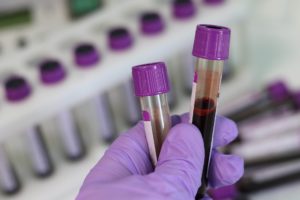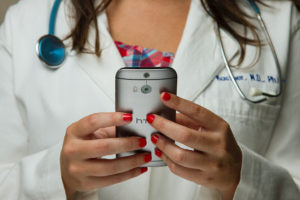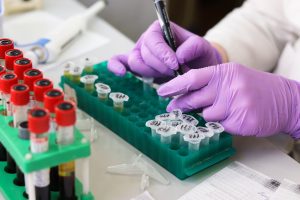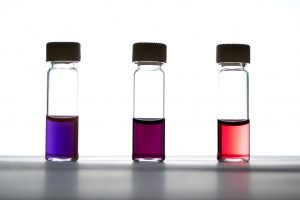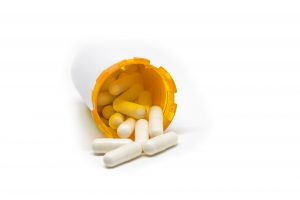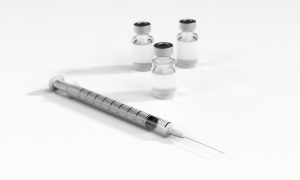
Year: 2020 and 2028
Market size: $3.99 billion and $11.7 billion, respectively
April 25th was National DNA Day. Events and celebrations commemorating the day are organized by the Human Genome Research Institute to encourage “people to learn more about the science that makes them genetically unique.”1 Why April 25th? On April 25, 1953, molecular biologist James Dewey Watson’s academic paper presenting DNA’s double-helix structure was published in the scientific journal, Nature. Francis Crick and Maurice Wilkins were co-authors. Almost 50 years to the day, on April 14, 2003, Human Genome Project scientists announced that the mapping of the human genome was complete.
Today’s market size shows total global revenues for next generation sequencing in 2020 and projected for 2028. Next generation sequencing (NGS), or massively parallel sequencing, describes a number of different modern sequencing techniques to directly determine the nucleic acid sequence of a DNA or cDNA molecule. NGS technology allows for the sequencing of DNA and RNA more quickly and cheaply2 with less DNA or RNA material needed than previous methods. Large-scale whole-genome sequencing can be done in one sequencing experiment. The Human Genome Project, which involved scientists at 20 institutions in France, Germany, Japan, China, the United Kingdom, and the United States, took 13 years to complete using the first-generation technique called Sanger sequencing. Sanger sequencing only sequences a single DNA fragment at a time. NGS sequences millions of fragments simultaneously. As a result, NGS may detect more novel or rare genetic variants.
NGS technology is popular among molecular biologists specializing in functional genomics. Functional genomics involves studying how genes function within a biological system, how genes interact with each other, and how genes interact with the environment. The oncology segment accounted for the largest share of revenues in 2020 at 28%. Leading companies are working toward an NGS-based diagnostics tool to detect cancer and analyze the genomic profiles of tumors to develop treatments for specific types of tumors. Some companies offer genetic testing to identify people who may be at higher risk of developing certain cancers. The development of targeted therapies, therapies targeted toward patients with specific or rare genetic biomarkers, is also increasing.
The infectious disease segment of the industry is expected to be driven by the use of NGS technology to identify coronavirus strains. The technology is used to study the spread of COVID-19 and to map its evolution. The Covid-19 Genomics U.K. Consortium was formed in March 2020 to use Whole-Genome Sequencing (WGS) to analyze the coronavirus genome. Research is ongoing in the use of NGS technology to develop vaccines and therapies to treat the virus. WGS technology is expected to grow at a significant rate from 2021 to 2028 due to its use in tackling COVID-19.
Targeted sequencing and resequencing had a 73% revenue share in 2020. This is an economical alternative for WGS and allows for the in-depth investigation of genomic regions. RNA-based targeted sequencing is expected to have significant growth through 2028 due to the increasing demand for differential expression analysis. The use of this technology for the diagnosis of schizophrenia and other disorders and the increased availability of expression kits for customized panels are expected to contribute to its growth over this time period also.
Sequencing is a critical step in the genomics workflow. This segment experienced a 54% revenue share in 2020. Revenue in this segment is also expected to have the fastest compound annual growth rate through 2028 as the use of WGS increases. As the use of WGS increases, so too does the amount of data that needs to be analyzed. Increased spending on analysis and management tools for the sequenced data is expected to have a positive effect on revenue share.
Academic research had a 53% share in 2020, followed by clinical research, hospitals and clinics, and then pharmaceutical and biotech companies. Research accomplished at universities and research centers is expected to contribute to growth in the academic research sector through at least 2028. The clinical research segment is expected to grow the fastest from 2021 to 2028 due to the rising use of NGS-based diagnostic tests and the availability of commercial clinical research solutions from various companies.
North America had a revenue share of 49.77% in 2020. The market was driven by several clinical laboratories that use NGS technology. Also, the development and launch of several new products using NGS technology are expected to increase market share through 2028. In August 2020, Quest Diagnostics started using the Automated NGS Engine to offer genetic risk screening for blood disorders, colon cancer, breast cancer, and heart diseases as part of AncestryHealth, a consumer genetics product of Ancestry. Although Ancestry decided to discontinue offering such tests in January 2021, Quest is continuing to develop applications that use NGS technology. The Asia Pacific region is expected to experience the fastest revenue growth through 2028 due to the presence of several leading NCS service providers in the region that offer their services to thousands of clinicians and hospitals across South Asia and India.
The NGS industry is highly competitive. To gain market advantage companies have been focused on launching platforms that are rapid, small in size, and less expensive. In 2020 some companies introduced products to support research and development for COVID-19 vaccine development and products to sequence the complete genomes of viruses. Some leading companies in the NGS market include Illumina, QIAGEN, Thermo Fisher Scientific Inc., F. Hoffman-La Roche Ltd., Oxford Nanopore Technologies, Genomatrix GmbH, PierianDx, DNASTAR Inc., Eurofins GATC Biotech GmbH, Perkin Elmer Inc., BGI Genomics, and Bio-Rad Laboratories Inc.
1 Source: “National DNA Day — April 25, 2021,” National Today available online here.2 In less than 20 years, the cost of sequencing the human genome dropped from $100 million to less than $1,000.
Sources: “Next Generation Sequencing Market Size, Share & Trends Analysis Report by Technology (Targeted Sequencing & Resequencing), by Application (Oncology, Consumer Genomics), by Workflow, by End-Use, and Segment Forecasts, 2021-2028,” Grand View Research Report Summary, February 2021 available online here; “Next Generation Sequencing Market Size Worth $11.7 Billion by 2028: Grand View Research, Inc.” CISION PR Newswire, February 23, 2021 available online here; “National DNA Day — April 25, 2021,” National Today, February 17, 2020 available online here; “Who Was Involved in the Human Genome Project?” your genome, June 13, 2016 available online here; “Ancestry to Discontinue NGS-Based AncestryHealth Service,” GenomeWeb, January 15, 2021 available online here.
Image source: Gerd Altmann, “dna-genetic-material-helix-proteins-3539309,” Pixabay, July 15, 2018 available online here.


